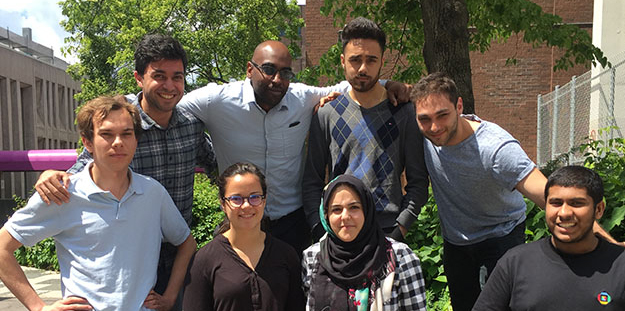It was a fast four months, but the ten co-op students who joined Enterprise Applications and Solutions Integration (EASI) this past summer gained a wealth of experience – from developing applications to analyzing data and improving user experience.
“We have a lot of projects on the go and really needed the extra help over the summer,” says Cathy Eberts, Director of U of T’s Enterprise Applications and Solutions Integration. “Implementing a co-op program boosted our capacity while directing this need to those who could benefit most – students looking for that much-needed job experience.”
The program, sponsored by Next Generation Student Information Services (NGSIS), included students from Seneca College, George Brown College, Ryerson University and the University of Toronto. From May to August, the recruits made major contributions to IT at the institution.
“I learned a lot! At school you learn things blindly and you don’t really participate in large projects,” says Saba Karamsoltani, who studies computer science at Ryerson University. “But working at U of T gave me a better sense of how to work with others.”
Karamsoltani worked on a large, multi-year project called the NGSIS Platform Modernization project – a project that will migrate the student system of record (ROSI) from an IBM mainframe to a distributed Linux platform. Five others – Nariman Saftarli, Nancy Mai, Thomas Marmer, Balkar Rana and Joshua Longhi – were also part of this vital effort.
Beyond application development, the co-op experience also extended Business Intelligence with Valerie Gilchrist and Mark Franciscus, and to User Experience and Process Design.
“In Computer Science at U of T, I study back-end development. While I’m still focused on back-end development, I’ve gained an appreciation for front-end design,” says Adnan Bhuiyan. “I didn’t realize how important it is to test different application prototypes and how rigorous the process should be.”
Bhuiyan used HTML and CSS to build an application that students can use to calculate their current as well as cumulative GPAs. He then worked with EASI’s User Experience and Process Design team to test designs with different users.
From an analytical standpoint, fellow co-op student Jason Sparks captured the Return on Investment (ROI) of the wide variety of current enterprise application projects.
“I hit the ground running and it was a great experience,” says Sparks, a Marketing Management and Financial Services student at George Brown College. “I analyzed 13 different projects and it was amazing to see the cost savings. Kronos, a time management system, saved U of T $14,622 in material costs in the past year after moving from a paper to a computer-based system.”
The program was so successful that Eberts plans to continue it next year.
“We had an outstanding group of students this summer. Staff are already asking me how we can make this happen again next year – I think most of us feel very fortunate to work at U of T and it’s our way of giving back to the community. Given enough physical space – expect the EASI co-op program to return again next year!”

